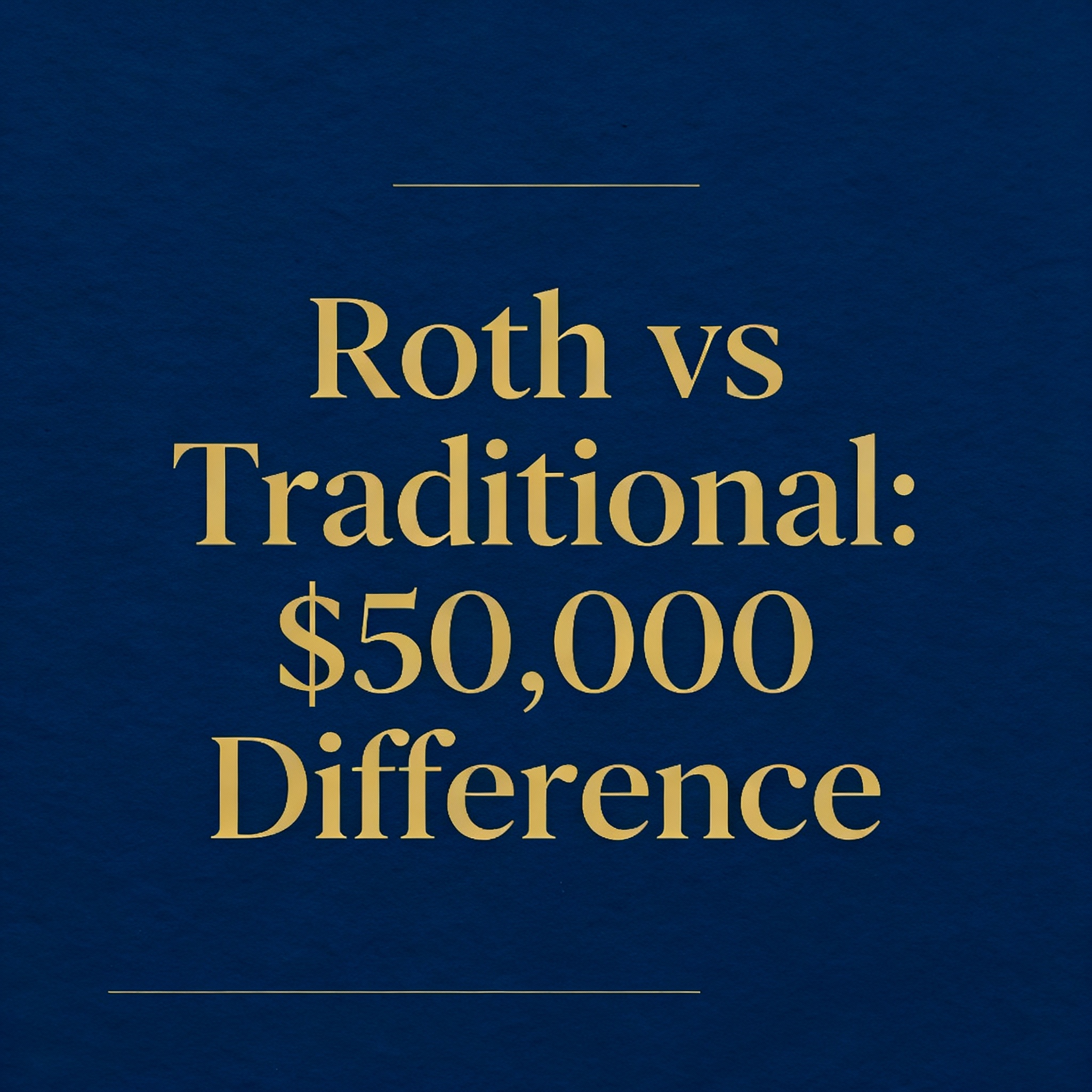Roth IRA vs. Traditional IRA: Which Will Save You More?
Choosing between a Roth IRA and a Traditional IRA can make a huge difference in your retirement income and tax bills—often tens of thousands of dollars. Understanding the differences in contributions, taxes, and withdrawal rules is key.
2025 IRA CONTRIBUTION LIMITS
$6,500 + $1,000 catch-up (age 50+)
Same limits for Roth and Traditional IRAs
Key Differences Between Roth and Traditional IRA
| Feature | Traditional IRA | Roth IRA |
|---|---|---|
| Contribution Tax Benefit | Tax-deductible (income limits apply) | No upfront deduction |
| Tax on Withdrawals | Fully taxable as ordinary income | Tax-free if qualified |
| RMDs (Required Minimum Distributions) | Mandatory at age 73 | None for original owner |
| Income Limits (2025) | None for contributions | Phased out above $138k MAGI (individual) |
| Withdrawal Flexibility | Penalty before 59½, exceptions apply | Contributions can be withdrawn anytime tax/penalty free |
The $50,000 Difference Example
Assuming $6,500 annual contribution for 20 years growing at 7%:
| IRA Type | Account Value at 20 Years | Taxes at 25% | Net After Tax |
|---|---|---|---|
| Traditional IRA | $280,000 | $70,000 | $210,000 |
| Roth IRA | $280,000 | $0 | $280,000 |
About the Author: Robert Chen is a Retirement Finance Analyst at RetireMetric.com, delivering expert guidance on tax-efficient retirement strategies, IRA planning, and wealth preservation.

Leave a Reply